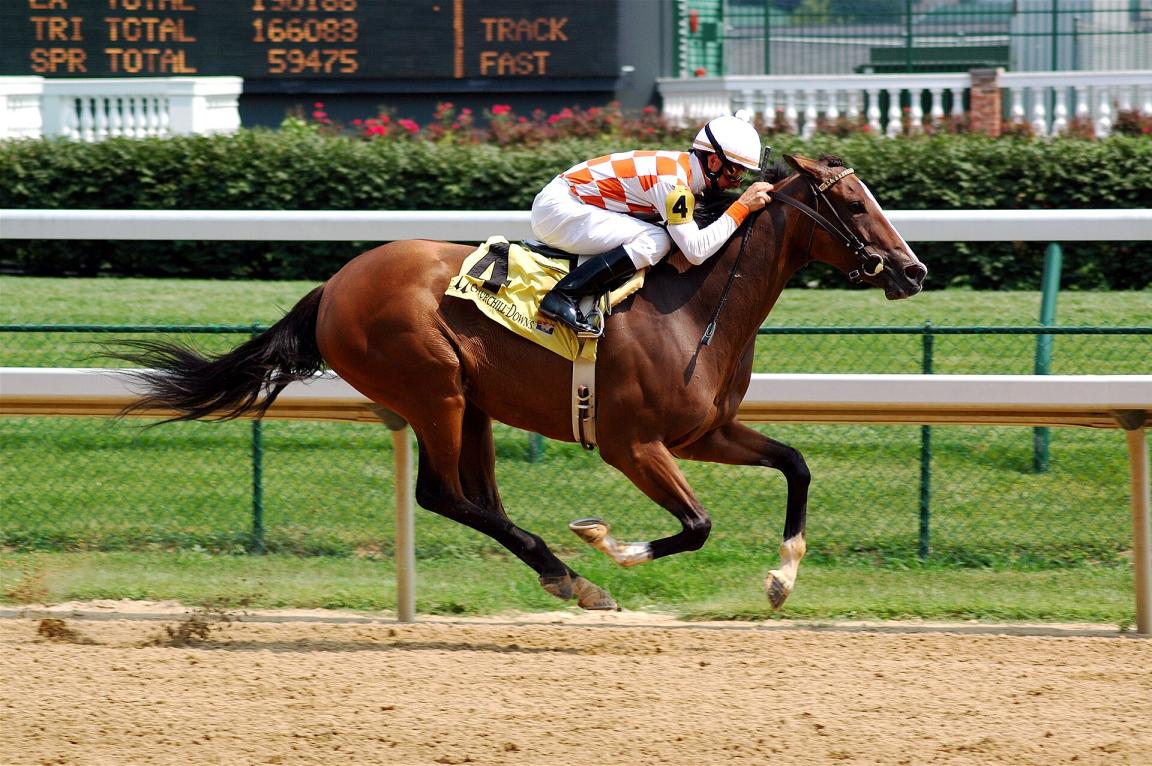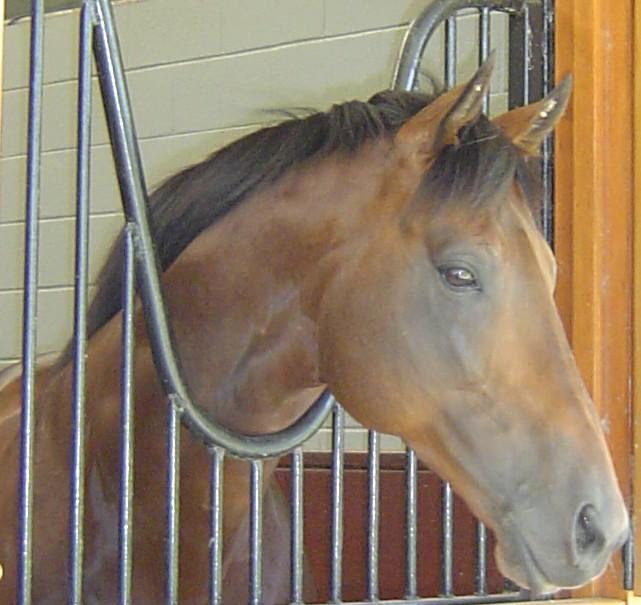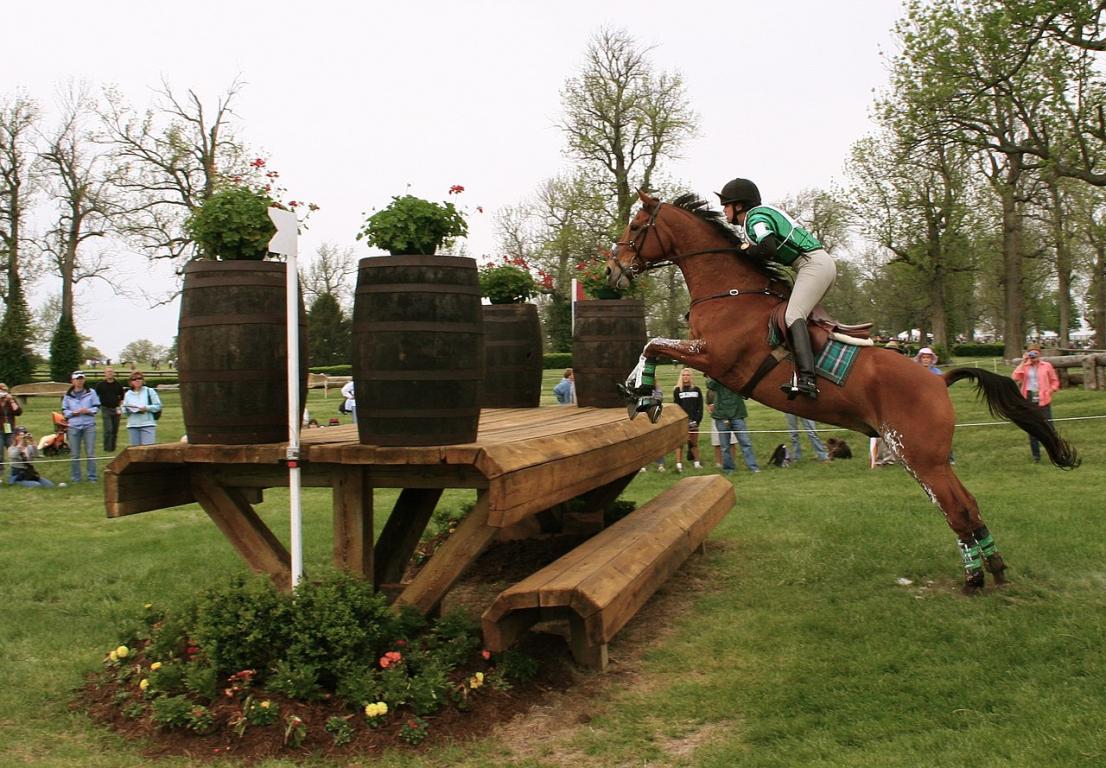
Continent: Europe
Country: United Kingdom
Weight: 400 – 500 kg
Height: 150 – 1720 cm



The Thoroughbred, or Pur-sang, is a horse breed that originated in England during the 17th and 18th centuries, in a cultural context where the aristocracy sought speed and performance in equine breeding.
It was developed by crossing native British mares with three legendary Oriental stallions the Darley Arabian, the Godolphin Arabian, and the Byerley Turk. The result is the Thoroughbred: the product of meticulous genealogical selection aimed specifically at flat racing.
The General Stud Book, established in 1791, marks the official beginning of the breed and ensures strict traceability of each bloodline. Since its creation, the stud-book has remained closed, meaning no outside horses even with similar traits can be added to the registry.
Deeply rooted in the cultural world of horse racing, the Thoroughbred has left a lasting mark not only in Britain, but across the globe. It is now considered the embodiment of the ideal competition horse, combining elegance, speed, and pure lineage.
The Thoroughbred is a globally distributed breed, raised on every continent due to its specialization in flat racing. Its historical breeding centers lie mainly in the United Kingdom and Ireland, traditional cradles of the breed where some of the oldest studs continue strict selection.
Today, the main breeding regions also include:
- France, especially in Calvados and the Southwest (home to national and private racing studs),
- United States, notably Kentucky, considered the global capital of the American Thoroughbred,
- Japan, where Thoroughbred breeding is highly structured and internationally recognized,
- Australia, a major racing nation with lines adapted to local climates,
- Gulf countries (e.g., UAE, Qatar), where the breed is prized for high-level competition and investment.
The global reach of the Thoroughbred makes it one of the few breeds bred according to shared international standards, with frequent cross-continental exchanges and globally valued bloodlines.
The Thoroughbred holds a central position in the modern history of equine breeding. Thanks to its rigorous selection and the early closure of its studbook, it offers one of the most traceable and genetically homogeneous lineages in the horse world.
Its genetics are highly sought after for transmitting key traits such as speed, refined conformation, natural galloping impulsion, and mental alertness.
Many modern sport horse breeds such as the Selle Français, Hanoverian, and KWPN regularly incorporate Thoroughbred blood to refine type, enhance movement, or stimulate responsiveness.
Its influence also extends to breeds used in racing, sport, and even leisure riding. The Thoroughbred remains a universal genetic improver, even within breeding programs far removed from its original specialization.
Eastern Origins and British Vision :
The Thoroughbred's story begins in England in the late 17th century, as horse racing became both a noble pastime and a strategic endeavor. To improve speed, endurance, and alertness, British breeders introduced renowned Oriental bloodlines.
Three foreign stallions of Arabian, Turkmen, or Barb descent formed the genetic foundation of the breed:
- Darley Arabian – imported from Syria in 1704,
- Godolphin Arabian – likely Yemeni or Barb, arrived around 1729,
- Byerley Turk – a warhorse from Eastern Europe in the 1680s.
These stallions were bred with selected English mares chosen for their conformation and galloping abilities.
The General Stud Book:
First published in 1791 by James Weatherby, the General Stud Book established the breed’s foundation. It listed all horses descending from the three founding sires and selected local mares.
By 1793, the studbook was officially closed, meaning that only direct descendants of these original lines can be recognized as Thoroughbreds. This has ensured a uniquely traceable genealogy, making it one of the purest breeds in the world.
19th Century Global Expansion :
During the 19th century, Britain widely exported Thoroughbreds to:
- France, where racing developed under Napoleon III,
- United States, with Kentucky becoming a major breeding ground,
- Australia, where the breed adapted and developed local lines,
- and later to Japan and the Gulf States.
Each country developed national lines but remained connected to the international registry.
Shaping Modern Racing :
By the 18th century, formal racing rules were being established. The Thoroughbred quickly became the gold standard for flat racing thanks to its speed, light build, natural impulsion (often called “hardiness”), and explosive power.
Today, it is the only breed allowed in top-tier flat racing events, including:
- Prix de l’Arc de Triomphe (France),
- Epsom Derby (UK),
- Kentucky Derby (USA),
- Dubai World Cup (UAE).
A Mythical Yet Fragile Breed :
Despite its prestige, the breed faces modern challenges: inbreeding, bone fragility, and rising criticism over intensive training practices.
Ongoing efforts aim to:
- preserve genetic diversity,
- support the transition of retired horses,
- and adapt breeding to evolving ethical standards.
The Thoroughbred is known for its sensitive, alert, and spirited nature. Bred for centuries for competition, it reacts quickly to stimuli, making it fast to learn, but also requiring skilled handling.
Its character is often described as:
- Fiery – with strong natural impulsion and eagerness to go forward,
- Intelligent – learns quickly but may be stubborn if it lacks trust,
- Sensitive – responds to rider emotions, tone of voice, and environmental changes.
This breed generally requires an experienced rider or close supervision, as its fineness and nervous energy can easily be misunderstood.
However, when well trained and respected, the Thoroughbred is loyal, generous, and capable of excelling in many disciplines beyond racing: show jumping, dressage, leisure, and even light equine therapy for calm individuals.
“Lively, sensitive, and willing, the Thoroughbred is a noble horse with a reactive temperament that demands a calm and experienced rider.”
The Thoroughbred remains one of the world’s most influential and valuable breeds, particularly in horse racing, where it holds a dominant position. However, several trends are shaping its future.
On the genetic side, the high level of inbreeding, a result of the closed studbook, is raising increasing concern. Scientific research is now focused on preserving genetic diversity while maintaining the performance traits that made the breed famous.
Economically, the rising focus on animal welfare is influencing breeding and training practices. There is growing awareness about:
- improving racehorse care,
- reducing injury rates,
- and supporting retraining into other disciplines (show jumping, leisure, performance).
Globalization is also reshaping the market, with countries like Japan, the UAE, and Australia developing powerful local bloodlines that now compete with the great European origins.
In summary, the Thoroughbred is heading toward a modernized future balancing performance, sustainability, and societal expectations.
The Thoroughbred is typically athletic but may be physically fragile, mainly due to performance-driven selective breeding. It shows several well-known predispositions and sensitivities:
- Fine bones → prone to stress fractures, especially during racing.
- Sensitive feet → small, fragile hooves, susceptible to abscesses or laminitis.
- Delicate digestive system → higher risk of colic, especially under stress or poor nutrition.
- Stress & gastric ulcers → common in horses with high sensitivity.
- Exercise-induced pulmonary hemorrhage (EIPH) → sometimes occurs in racehorses.
A proper care routine including balanced diet, gradual training, regular hoof care, and a calm environment helps prevent or reduce these issues. With good management, some Thoroughbreds can live as long and healthy as other sport horses.
A natural four-beat gait, where each hoof touches the ground successively. It is slow, steady, and comfortable.
A two-beat, symmetrical gait, where diagonal pairs of legs (left fore + right hind, and vice versa) move simultaneously. It is a bouncy, rhythmic gait.
A three-beat gait (sometimes four depending on the footing), very fast and natural in the Thoroughbred. It includes a moment of suspension when all four feet are off the ground.
Born on 02/11/2008
Considered one of the greatest Thoroughbreds in history, Frankel was undefeated in 14 races, dominating the British turf between 2010 and 2012. He won multiple Group 1 events, including the 2000 Guineas, Queen Elizabeth II Stakes, and International Stakes, with exceptional power and consistency.
Born on 03/30/1970
An American legend and Triple Crown winner (Kentucky Derby, Preakness Stakes, Belmont Stakes) in 1973, with unbeaten records that still stand. Nicknamed "Big Red", he is widely regarded as the greatest Thoroughbred of all time.
Born on 03/30/2005
An undefeated French Thoroughbred, winner of the 2008 Prix de l’Arc de Triomphe. She left a lasting impression with her dominance and ease, beating all her rivals throughout her career.
Born on 04/06/2006
European champion in 2009, he won six consecutive Group 1 races, including the 2000 Guineas, the Epsom Derby, and the Prix de l’Arc de Triomphe a historic treble.
Born on 02/12/2014
Two-time winner of the Prix de l’Arc de Triomphe (2017 and 2018), this British mare was admired for her longevity and consistent top-level performances.
Born on 08/18/2006
Australian Thoroughbred, undefeated in 25 races, known for her explosive speed over sprint distances. A global sprinting icon.